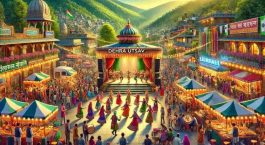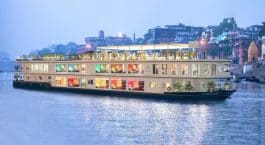India’s Visa Policy regime is quite a hit among foreign travelers from around the world. In addition to smooth entry, stay and movement of visitors with legitimate purposes in India, it has effectively ensured the country’s security.
Only in the last one year, the Ministry of Home Affairs (MHA) has taken a series of effective steps to liberalize the visa process in India. The popularity of Electronic Visa (eVisa) facility in India is totally skyrocketing, boosting the numbers exponentially.

Some major points among them are:
Foreign nationals of 166 countries are now allowed to avail the eVisa facility. This facility is available at 26 international airports and 05 major seaports of India. Thus solving the problems risen form communication. As foreigners with different speaking languages do not have to interact with any Indian official till arrival at the immigration counter, they have as hassle free and smooth procedure.
The applicants as well as granted e-visa to foreigners has gone up from 4.47 lakhs in 2015 to 17.00 lakhs in 2017. The latest figure for 2018 is 18.78 lakhs upto the 30th October, 2018.
The procedure of e-visa to a foreigner in India is also time-saving. The Bureau of Immigration (BoI) takes 24-48 hours to examine the request and decide whether or not to grant an e-visa.
MHA also recently introduced two new categories of e-visa i.e. e-Conference & e-Medical Attendant visa. Now, E-visa is now available for five categories i.e. (i) Tourist, (ii) Business (iii) Medical (iv) Conference and (v) medical attendant.
The new liberal policies for Visa in India has even extended to the Foreigners Regional Registration Office (FRRO). Now, FRROs will have powers to act upon almost 27 visa related services. These include Visa extension, Visa conversion, registration, exit permission, etc. Cutting short their waiting time, this authority will speed up clearances for various foreigner’s visa related services.
FRRO also gets an online portal for its online services. e-FRRO facility caters to all of the 27 visa services. Payment are accepted online and offline.
MHA furthermore provides the extension of electronic visa beyond 60 days upto 90 days to FRRO. Moreover, in comparison to availing these e-visas twice a year, they can now be availed three times in one year.
Furthermore, FFRO has the authority to allow conversion of any category of visa of a foreign national who is married to an Indian citizen/Person of Indian Origin/OCI Cardholder into an Entry Visa at any point of time.
FRRO even Facilities such as extension of employment and business visas for a period up to ten years within India as against five years at present; extension of visa of foreigners who are staying in India upto 15 years continuously and for 5 years at a time; permitting a foreign national who is already in India on Long Term Visa to attend international conferences/seminars/workshops without any specific permission from the FRRO concerned have also been extended.
A measure by MHA to book cruise tourism immigration facilities is the provision of e-Landing Permits at five major seaports to passengers for their onshore site-seeing in India.
Also, a boon for foreign nationals with sudden medical emergenices during their stay in India is granted. Now, medical treatments can be availed easily without converting any category of the visa into Medical Visa.
To ensure safety, MHA has ensured that foreigners require Restricted Area Permit/Protected Area Permit along with a proper visa to visit areas declared as “Restricted” or “Protected”. While in many cases, such permits are granted only after a Prior Reference made by the concerned State/UT Govt. to the MHA. Now, there will be rationalized issuance of the permits. As the proper clearance required time and hassle, it created a problem for entry for a foreigner.
To get a Protected Area Permit (PAP) and Restricted Area Permit (RAP), MHA will allow foreigners in the following three major conditions
- To visit a place covered under the PAP/RAP regulations for activities other than tourism on a visa other than Tourist Visa;
- To visit a place for tourism purpose which is not yet opened for tourism;
- Individual foreign tourists.
Consequently, the State Government concerned or the FRROs will have the authority to decide to locally and grant PAP or RAP to foreigners under these conditions.
Previously, the Andaman & Nicobar Islands required a visa as well as an RAP. But for the reason to promote tourism there have been changes to the existing RAP orders. Now, 30 islands of Andaman & Nicobar are exempted from RAP regime under the Foreigners (Restricted Areas) Order, 1963.
Also, Foreigners will now be allowed to visit 11 uninhabited islands of the Andaman & Nicobar archipelago. Under supervision of Andaman & Nicobar Islands Administration, visitors of foreign nationality are allowed day trips without any RAP. Although it will be mandatory to register by foreigners visiting these islands.
Furthermore, revisions are made to the rules relating to grant of intern visa. To lure foreign nationals for internship in India which will benefit to Indian organizations, Intern Visa is now available at any time during the course of study. Moreover, the minimum fee requirement for intern visa for internship in an Indian company has been reduced. The revised remuneration will be INR 7.80 lakhs instead of INR3.60 lakhs per annum.
Also, there has been changes to further improve speed and transparency in processing of visa for international conferences/seminars/workshops. An e-Event Clearance Module is operational since April, 2018 for the same. As a result of faster conference clearance, there will be faster visa issuance for the foreign national expecting to attend such conference.
Related post :
Countries you can visit with an Indian passport without visa!




Nice and informative…..thank you for posting…
Hey Pranavi
Thank you for your kind words. Keep on following our blogs for more such informative posts in the future.